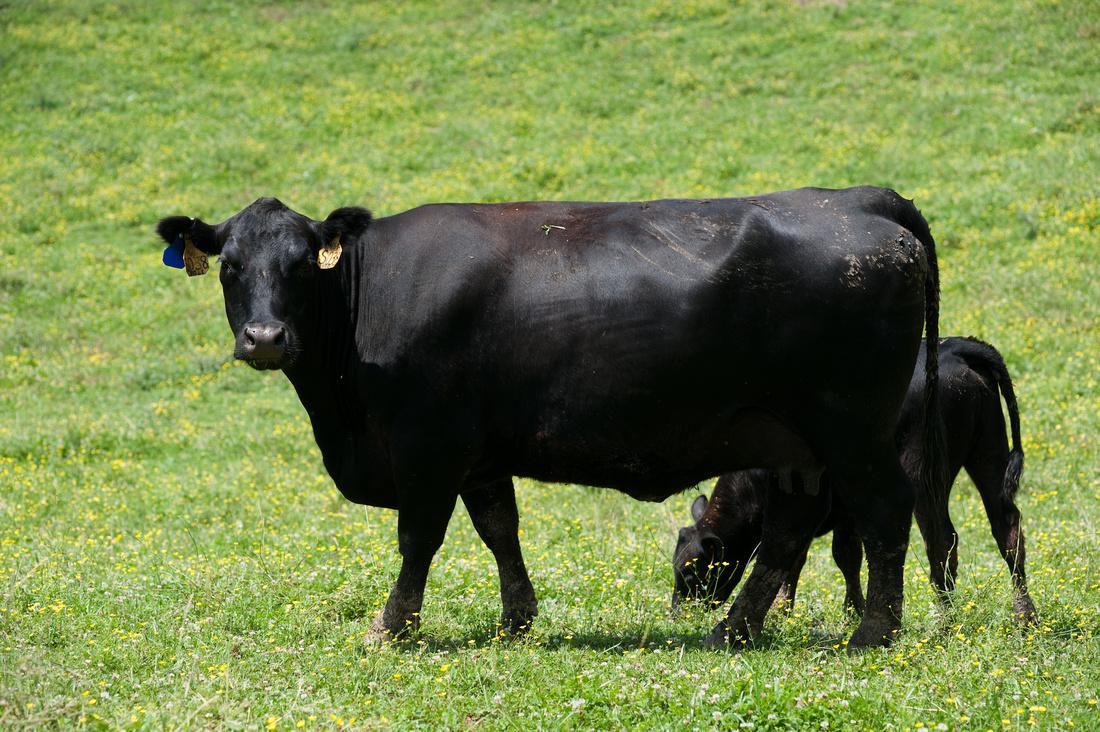Body Condition Score is a Critical Tool for Cow-Calf Producers
Managing the nutritional status of cows is one of the cornerstones for a successful and profitable cow-calf operation. It is important to pay attention to a cow’s nutritional status to ensure that she is 1) able to produce sufficient quantities of milk to grow her calf; 2) ready to conceive during breeding season a few months after calving; and 3) capable of sustaining that pregnancy to generate another healthy calf.
Poor nutritional status can have dramatic impacts on milk production and fertility, and thus, the ability of the beef cow to do her job well. After calving, it is expected that cows will utilize some of their body fat and protein (from muscle) stores to support milk production—this is a normal, physiological process in mammals that can be observed in many other species. However, it is important to monitor and manage these changes in beef cows in order to optimize productivity.
Cows that are thin or use too much of their body stores during early lactation often have difficulty resuming their reproductive cycle before breeding season, making them more likely to conceive later in the breeding season or be culled for not getting pregnant during the breeding season. Cows that conceive later in the breeding season will have calves born later during calving season which will likely be smaller at weaning. Thus, ensuring the appropriate nutritional status of cows can have significant implications for the overall profitability of the cow-calf operation.
One of the best and most informative tools that can be used to evaluate the nutritional status of animals is body condition scoring. The purpose of body condition scoring is to assess the amount of fat that an animal possesses. An animal that is “over-conditioned” carries excess fat while an animal that is “under-conditioned” carries too little fat. In beef cattle, scores are assigned on a scale of 1 to 9, with a score of 1 indicating an animal that is extremely thin and malnourished and a score of 9 indicating an animal that is obese.
While body condition score is designed to reflect the body fat stores of the animal as a whole, there are a few key areas that should be examined when determining a score: ribs, backbone, hooks, pins, tailhead, and brisket. While learning how to body condition score cattle takes a little bit of time and practice, it is a skill that all producers should exercise and become proficient in so that they can identify times when additional nutrients may be needed by their cattle or vice versa. A step-by-step guide for body condition scoring cattle can be found at: https://go.umd.edu/BCSGuide-NE

At a bare minimum, there are three critical times when body condition should be assessed in a cow-calf operation: 1) approximately 60-90 days before calving; 2) at calving; and 3) at weaning. Ideally, cows should calve in at a score of about 5.5 to 6, while first-calf heifers should calve in at a score of about 6 since they are still growing. This will help ensure that cows have appropriate condition (ideally, a score of at least 5) by the time breeding season begins.
Scoring cows 60-90 days before calving allows for adjustments to be made to the feeding program if cows are not in appropriate condition for calving. Scoring at weaning is informative because it helps guide feeding decisions to ensure pregnant cows achieve adequate condition before their next calving. Cows that are thin at weaning will need more high-quality forage to replenish body stores before calving in the next season.
If cows are not in good condition at calving, be prepared for possible hiccups come breeding season since they will likely be thinner and take longer to begin cycling and conceive. If cows are thinner than desired at calving (i.e., less than a score of 5.5 to 6), ensuring adequate access to high-quality forage may help to moderate condition loss during early lactation going into breeding season, which can help promote fertility. Utilizing estrous synchronization programs may also help get these cows to start cycling as well.
As we get past the cool, wet spring weather and into summer when growth of perennial pasture slows dramatically, forage availability typically declines and it can sometimes be difficult for cows to maintain condition or replenish stores that were lost earlier in the season. In these instances, supplemental feeding may be required. In extreme cases, early weaning of calves (at ~6 months) may also be an option. The premise of early weaning of calves is to give cows more time to replenish body condition on pasture, which is more economical than feeding for body condition gain during the winter.
When it comes to managing the nutritional status of the cow herd, the old adage “an ounce of prevention is worth a pound of cure” definitely holds true. Ensuring cows are in appropriate condition before calving is much easier (and cheaper) than dealing with the repercussions of cows that are too thin going into breeding season. If you find yourself in a situation where cows are in less than ideal condition at calving, do your best to improve nutritional status as breeding season approaches by ensuring access to high-quality forages, but take steps to ensure the appropriate condition is achieved and maintained before calving next year. For additional information or training resources related to body condition scoring cattle, contact your local extension agent or veterinarian.
More Beef Resources Printer Friendly Version
This article appears in May 2021 (Edition 1), Cattles Tales Livestock newsletter.
